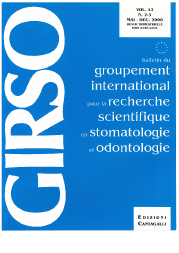Radiographic images: appearance and reality (a method of measurement of the 3D coordinates of anatomic points) [Article in French]
Abstract
The catch of stereotypes X-ray introduces a conical projection phenomenon which introduce errors from 1 to 5 millimetres. To obtain the real position of anatomical point with precision, we show an original method of co-ordinate 3D calculation which takes account of system radiographic dimensions. A point of space is located compared to the frame of reference of center O (medium of the segment materialized by olives). The frontal stereotype is selected like image of reference after having placed, a 4 mms metal ball on midface of patient. The side stereotype is obtained while making turn the patient of 90 degrees. The axial stereotype is obtained by rotation of the head, around horizontal olives axis. We suppose that the Source-Stereotype unit turns around the patient's head (considered fixed). The protocol comprises a stage of catch of stereotypes X-ray, a stage of digitalization of the sights and initialization of the system and a stage of measurement itself. We describe the setting in equation of real co-ordinate point determination. We apply to the apparent coordinate, the correction formulas we obtain the real co-ordinates of the point.
Downloads
Published
Issue
Section
License
I hereby certify that the authors of the above manuscript have all:
1. Conceived, planned, and performed the work leading to the report, or interpreted the evidence presented, or both;
2. Written the report or reviewed successive versions and shared in their revisions; and
3. Approved the final version.
Further, I certify that:
1. This work has not been published elsewhere and is not under revision in another journal;
2. Humane procedures have been followed in the treatment of experimental animals (if applicable);
3. Investigations in humans was done in accordance with the ethical standards of the responsible committee on human experimentation or with the Helsinki Declaration (if applicable).
4. This paper has been carefully read by a native English speaker who is familiar with the field of work (this applies to authors who are not fluent in English); and
5. The copyright of the article is transferred from the authors to the Bulletin du Groupement International pour la Recherche Scientifique en Stomatologie et Odontologie upon acceptance of the manuscript.



